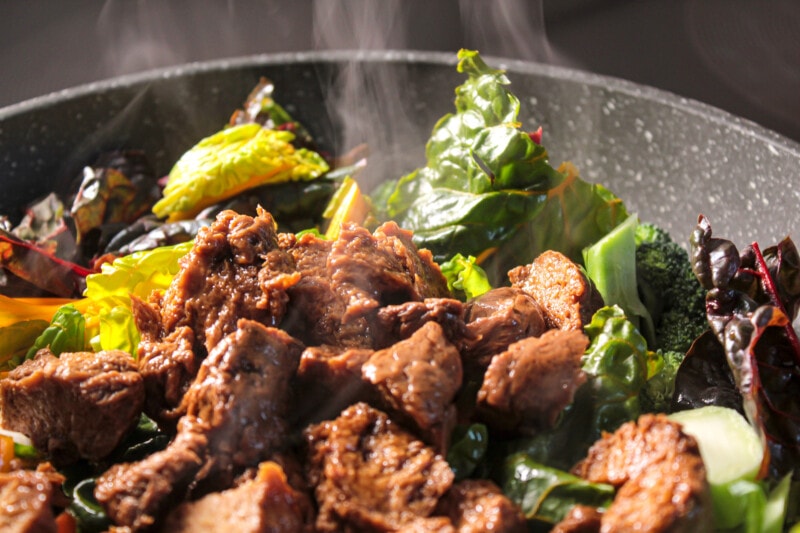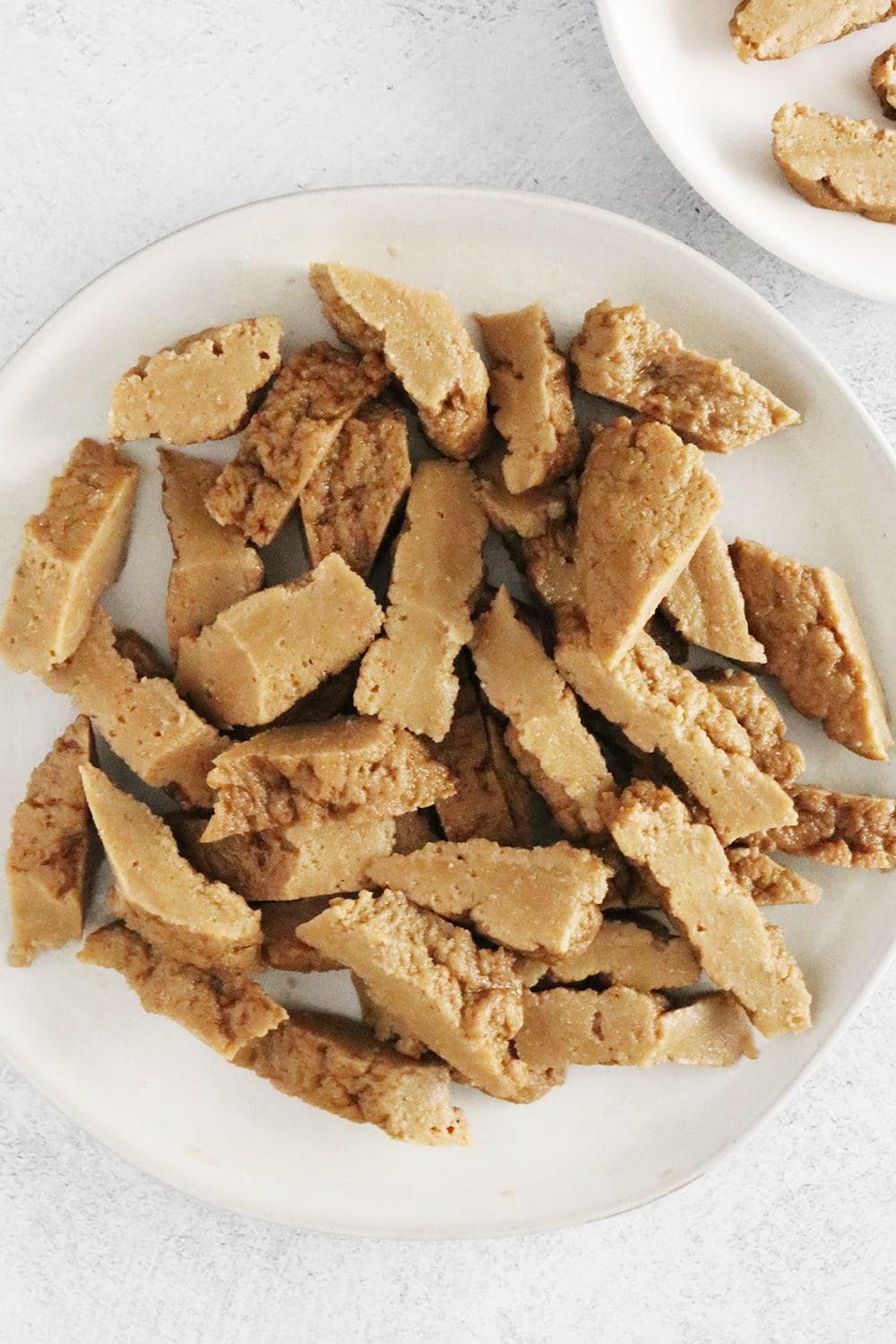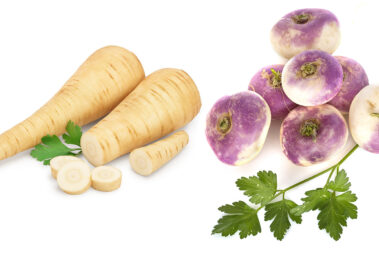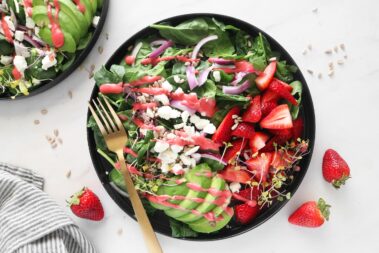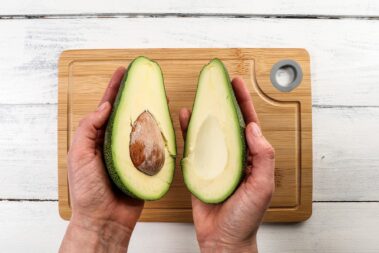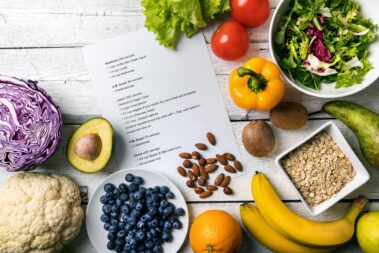Seitan is becoming an increasingly popular substitute for meat in many circles. But, thanks to a strange name and shape-shifting appearance, many people are still wondering: what is seitan?
In this article, we’ll introduce you to this highly versatile “wheat meat” and its long history. We’ll also tell you everything you need to know about seitan’s flavor, health benefits, how to cook with it, and introduce you to some of our favorite seitan recipes.
Table of Contents
What Is Seitan?
Seitan is a meat substitute that is made by isolating the protein, or vital wheat gluten, in wheat dough. Traditionally this was done by rinsing dough in water to wash away the starch. The remaining material has a chewy, meaty texture that can be pressed into many shapes.
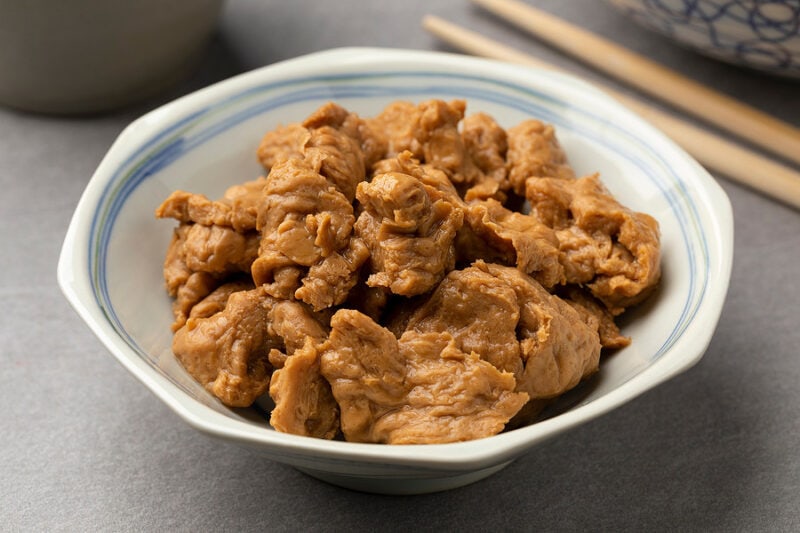
This vegan favorite has a long history, dating back to sixth-century China. There, Buddhist monks discovered seitan after soaking wheat dough in water. This versatile food became a vital tool for helping would-be followers convert to a vegetarian lifestyle.
Seitan didn’t make an appearance in the West until many centuries later when, in the 1960s, George Oshawa, the founder of the macrobiotic diet, brought the food from Japan. The term seitan is of Japanese origin and is thought to originate from the words “sei” (made of) and “tanpaku” (protein).
What Does Seitan Taste Like?
When prepared plain, wheat meat has a neutral flavor that is comparable to plain chicken but with a hint of earthiness, somewhat reminiscent of white mushrooms. Like plain tofu, it will take on the flavor of any meal you make.
Unlike tofu, the texture of seitan is very similar to real meat. It can be made softer or firmer by changing pressure in the production process.
Many commercial seitan brands sell pre-seasoned seitan that is meant to emulate the flavor of whatever type of meat it is supposed to be substituted for. Seitan lunch meat slices, for instance, often include spices to make them taste smoky, sweet, or tangy.
Seitan vs Tempeh
Two vegetarian meat substitutes that people often confuse are tempeh and seitan. While seitan is made from wheat flour, tempeh is made from soybeans.
The process of making tempeh is quite different from the other common soy product, tofu. With tempeh, the beans are directly fermented, which gives it a chunky, nutty texture. Tofu, on the other hand, is made from fermented soy milk and has a smooth, consistent texture.
Is Seitan Healthy?
In general, seitan is a healthy food that is packed with protein and minerals. Traditionally prepared seitan is minimally processed and retains many of the natural health benefits of wheat. But many commercially produced varieties are highly processed and less nutritious.
Seitan Nutrition
Because seitan is made by isolating the protein in wheat, it is naturally low in sugars and carbohydrates. Since wheat doesn’t have much fat in it, to begin with, seitan is also low in fat.
One serving of seitan has between 15 and 21 grams of protein, that’s as much protein as one serving of real meat. However, unlike meat and tofu, seitan does not contain enough of all essential amino acids to be considered a complete protein. It is very low in lysine, but this amino acid can easily be added to your plate by pairing your seitan with beans, steamed peas, or hummus.
Seitan also provides a number of minerals, including iron, copper, calcium, and phosphorus.
Seitan Health Benefits
Seitan doesn’t boast a long list of miraculous health benefits like some other superfood vegan favorites, but when swapped for meat, it can make a huge difference in your overall health.
Seitan has as much protein as meat but without saturated fat. This plant-based protein doesn’t increase free radicals in your body the way meat does, either. Overall, it is a great food to include in your diet if you are trying to transition to a vegan lifestyle or are looking to lose weight and up your protein intake.
When To Be Cautious with Wheat Gluten
Gluten has become a bit of a red-flag word in the dietary world, which has many wondering if eating seitan is risky.
There are many conditions that can cause people to react negatively to gluten. Individuals with celiac disease are the most at risk from consuming seitan. This autoimmune disease is triggered by the presence of gluten in the gut and can lead to painful stomach cramps, malnutrition, and cancer if gluten is not strictly avoided.
Wheat allergies and other gluten sensitivity and intolerance disorders can also cause people to react negatively to seitan. Some studies suggest that gluten can cause leaky gut issues in even healthy people who consume it, but this finding has not been well replicated.
How Is Seitan Used
Wheat protein is highly versatile and can be used in a variety of recipes or prepared on its own.
How to Cook Prepared Seitan
To cook plain seitan, simply dice it up and throw it in a pan with a little oil. Then add spices and flavorings, like soy sauce or garlic powder, and cook until lightly browned. Seitan can also be steamed or simmered in water or sauce.
Our Favorite Seitan Recipes
Because seitan can be prepared in so many ways and flavored to fit any meal, it is the star of plenty of recipes. Here are some of our favorite seitan-centric dishes.
- Vegan Fajita Bowl – This tasty recipe puts a fresh spin on your traditional fajita bowl by using seitan in place of meat and quinoa in place of white rice.
- Smokey Seitan Kebabs with Peanut Sauce – This delicious recipe starts with homemade seitan and ends with a satisfying meal experience you won’t soon forget.
- Vegan Curry Seitan “Chicken” Salad – This sandwich mix is absolutely amazing and packed with extra protein.
- Vegan Seitan Tikka Masala – Love this classic westernized Indian dish? Trust us, it’s even better with seitan.
- Chili Colorado Seitan Stew – This red chili has a rich flavor and the perfect texture. In addition to seitan, this recipe features a variety of deeply delicious dried chili varieties.
How to Make Seitan at Home
Although store-bought seitan is convenient, it can be expensive. Luckily, however, seitan is easy to make at home — and cheaper, too. Here’s how:
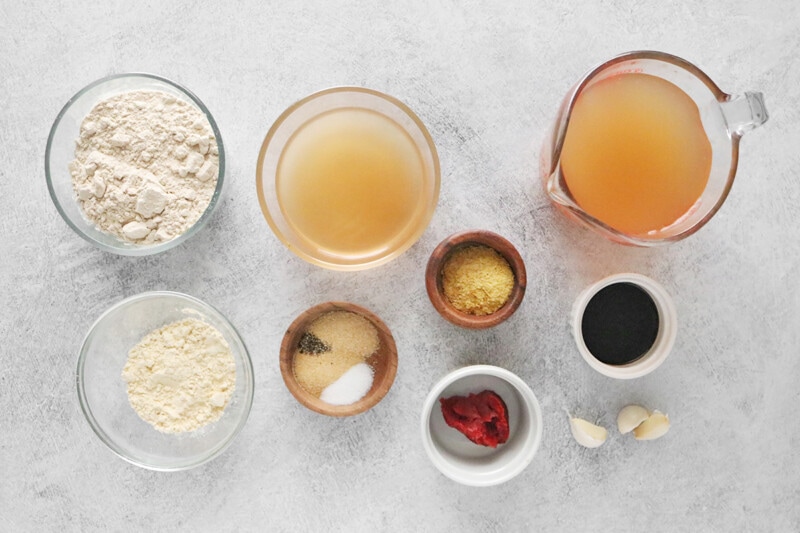
1. In a large bowl, combine the dry ingredients.
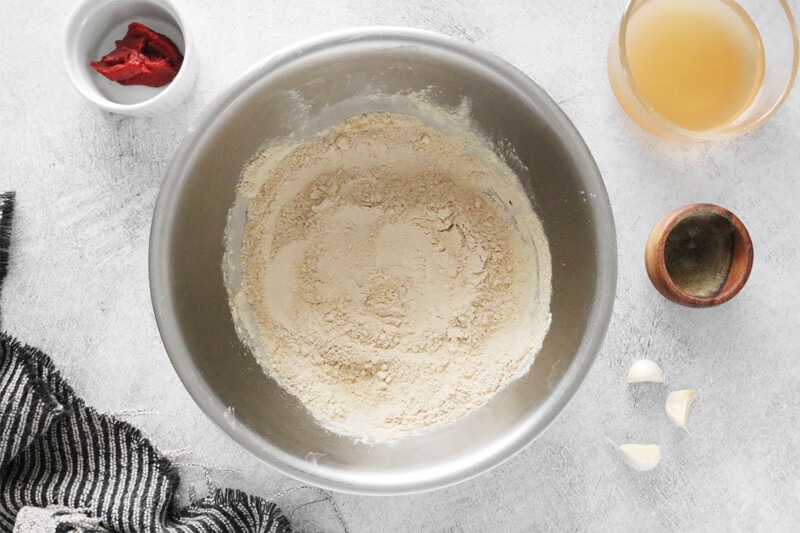
2. Add the broth, soy sauce, and tomato paste.
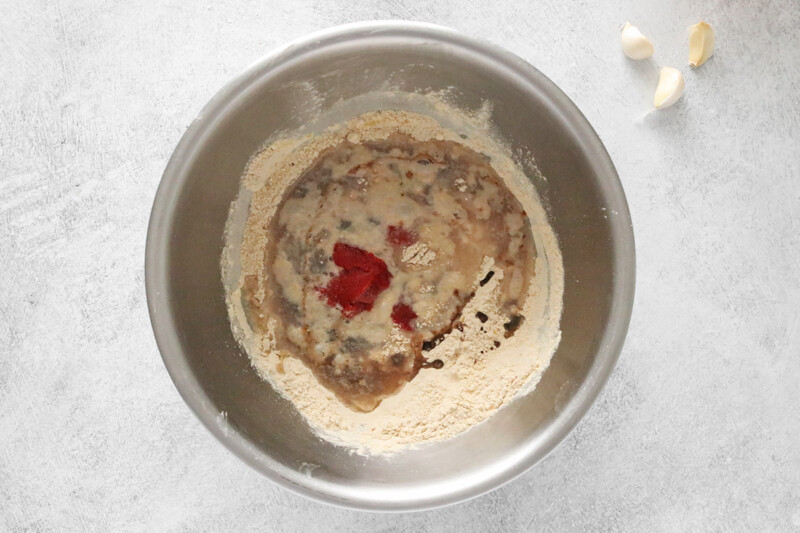
3. Mix the ingredients.
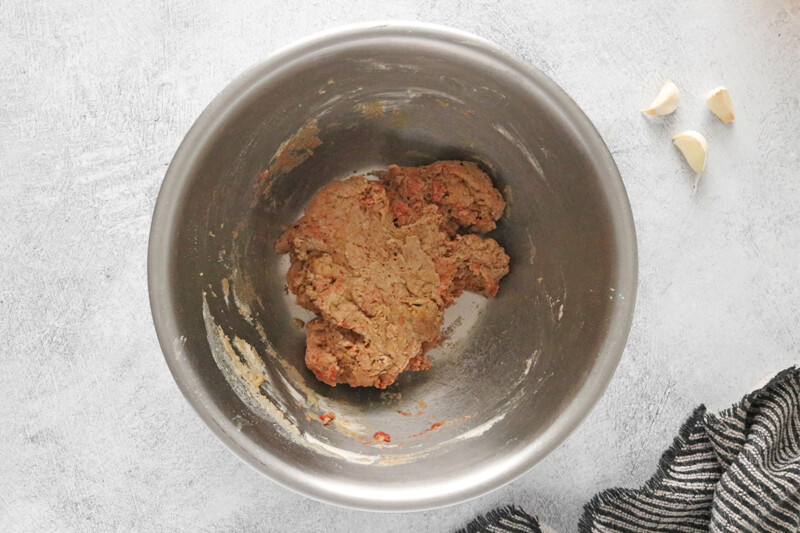
4. Once the mixture forms a sticky dough, transfer the seitan to a clean surface. Knead the dough for about five minutes until it’s somewhat stringy. Let sit for 10 minutes.
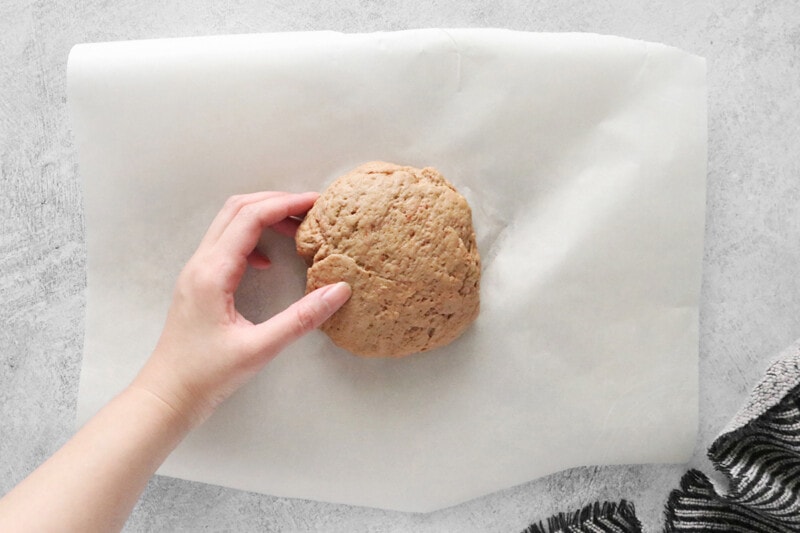
5. Separate the dough into four pieces. Form each one into a patty, about 1 inch thick, by gently pulling the dough.
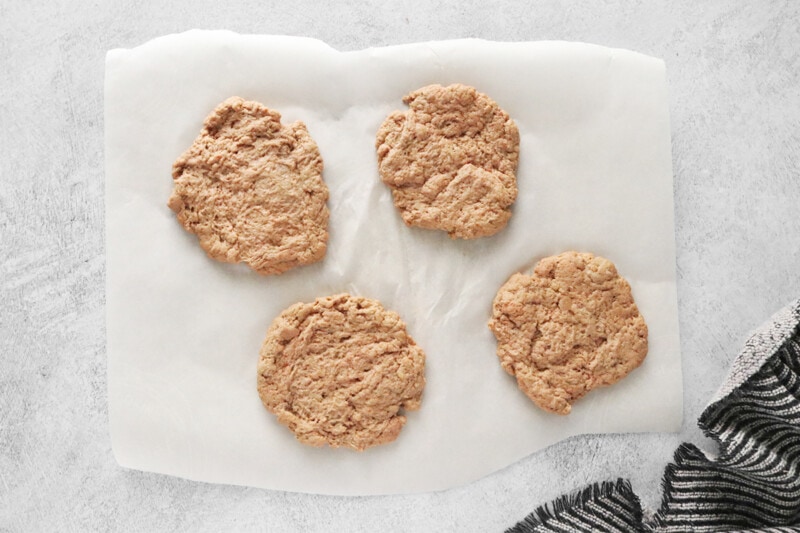
6. Fill a large pot (or very deep pan) with 4 to 6 cups broth, 3 tablespoons soy sauce, and sliced garlic. Bring the mixture to a boil, then reduce to a simmer. Add the seitan and cook for 1 hour, adding more liquid as necessary to ensure the patties are covered.
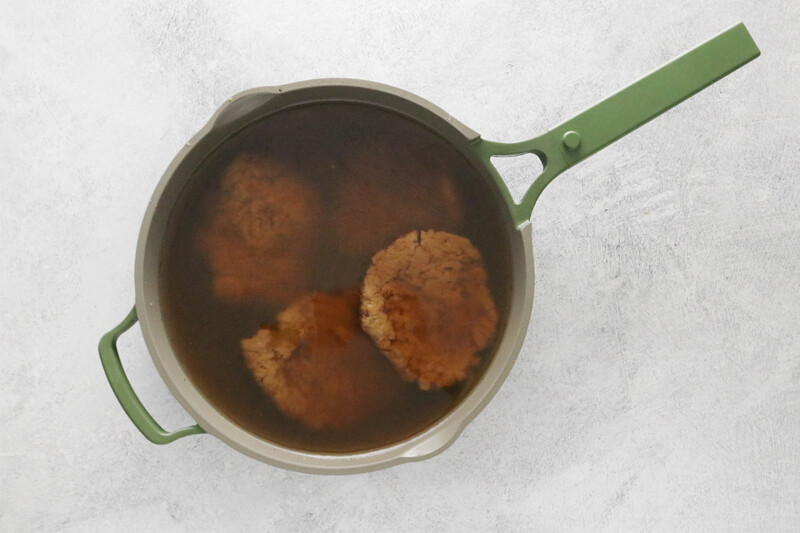
7. Using tongs, remove a patty from the broth. Slice it in half and check the center. If it’s firm, the seitan is ready. Cut the seitan into strips or chunks and cook according to your recipe.

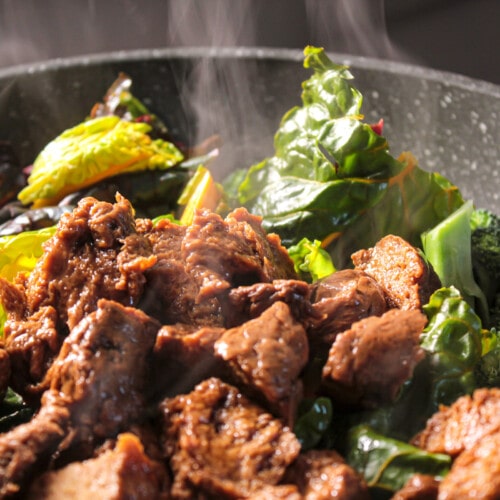
How to Make Seitan
Ingredients
Seitan
- 1 cup vital wheat gluten
- ¼ cup chickpea flour
- 2 tablespoons nutritional yeast
- 1 teaspoon onion powder
- 1 teaspoon garlic powder
- ½ to 1 teaspoon salt optional
- ¼ teaspoon ground black pepper
- 1 cup low-sodium vegetable broth
- 2 tablespoons tomato paste
- 2 tablespoons soy sauce
Broth
- 4 to 6 cups vegetable broth plus more as needed
- 3 tablespoons soy sauce
- 3 cloves garlic sliced
Instructions
- In a large bowl, combine the dry ingredients.
- Add the broth, soy sauce, and tomato paste.
- Mix the ingredients until combined.
- Once the mixture forms a sticky dough, transfer the seitan to a clean surface. Knead the dough for about five minutes until it’s somewhat stringy. Let sit for 10 minutes.
- Separate the dough into four pieces. Form each one into a patty, about 1 inch thick, by gently pulling the dough.
- Fill a large pot (or very deep pan) with 4 to 6 cups broth, 3 tablespoons soy sauce, and sliced garlic. Bring the mixture to a boil, then reduce to a simmer. Add the seitan and cook for 1 hour, adding more liquid as necessary to ensure the patties are covered.
- Using tongs, remove a patty from the broth. Slice it in half and check the center. If it’s firm, the seitan is ready. Cut the seitan into strips or chunks and cook according to your recipe.
Notes
- The tomato sauce and soy sauce will give the seitan a dark tint. If you want a lighter seitan for a specific recipe, omit these ingredients.
- It’s essential to knead the seitan dough; this step will properly develop the gluten.
- When boiling the seitan, be sure to use a pot large enough to comfortably fit all four patties while keeping them fully submerged. The seitan will also expand slightly, so be sure to keep that in mind.
- Store the seitan in the broth in an air-tight container in the refrigerator. This will allow the seitan to continue soaking up the broth’s flavors.
- Eat the seitan within 7 days.
- To freeze seitan, slice it into cubes or strips first. Store in a freezer-safe bag or container. Homemade seitan will last about 6 months in the freezer.
Nutrition
- How to Pick the Perfect Watermelon For a Sweet Summer Treat - April 10, 2024
- Future Kind’s Foundations: A Multivitamin Made for Vegans - December 5, 2023
- Does Nutritional Yeast Go Bad? - November 28, 2023

